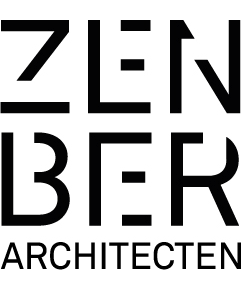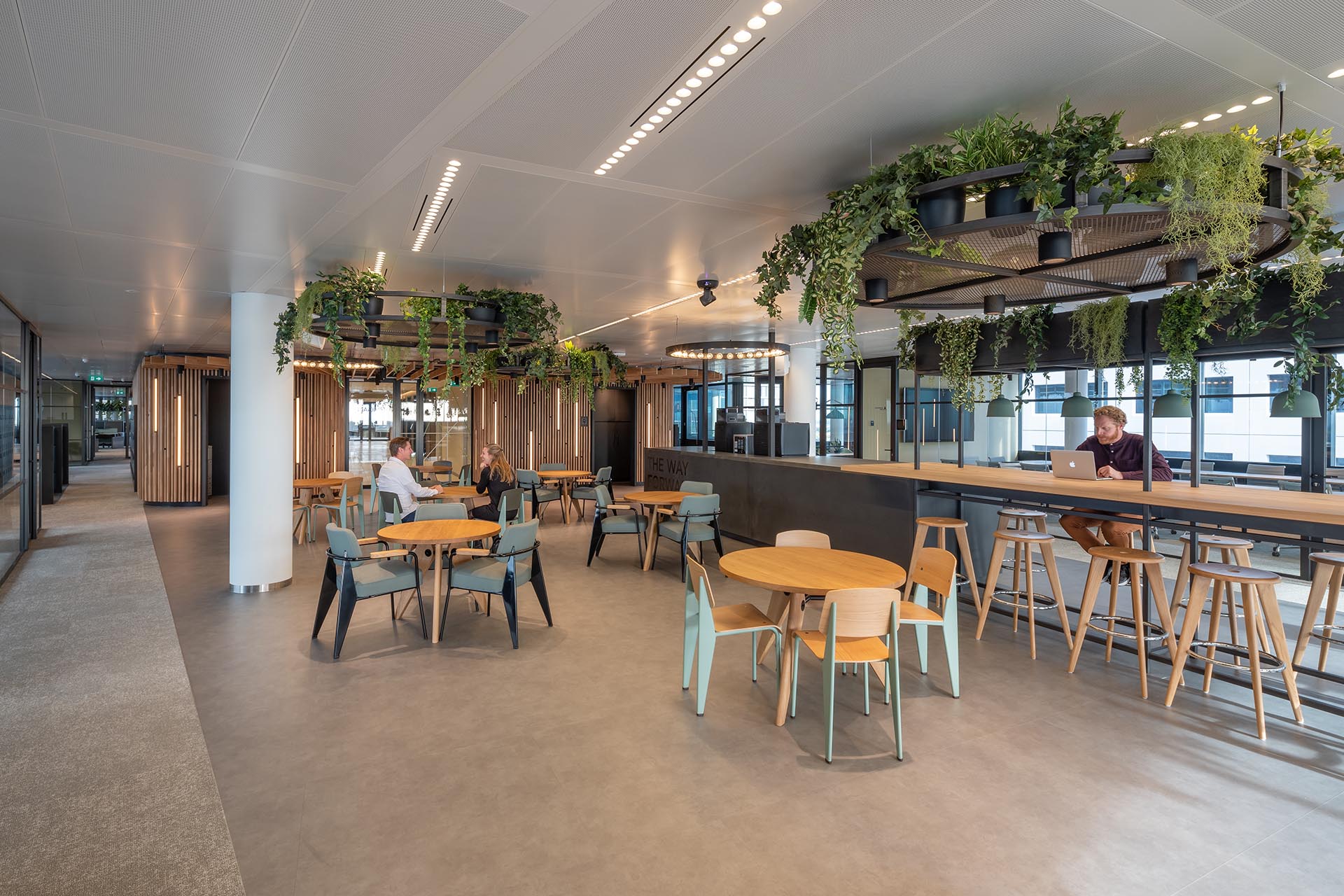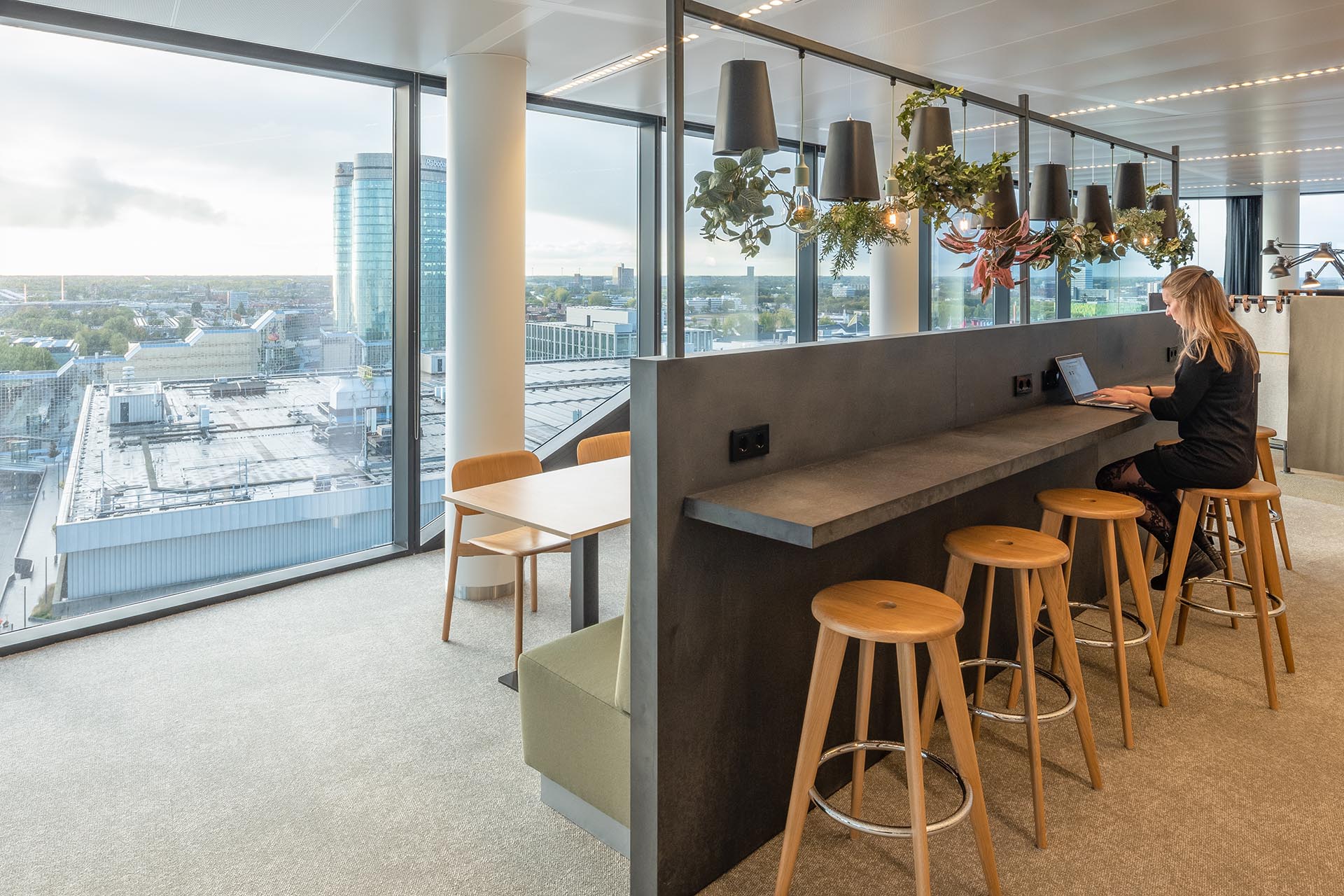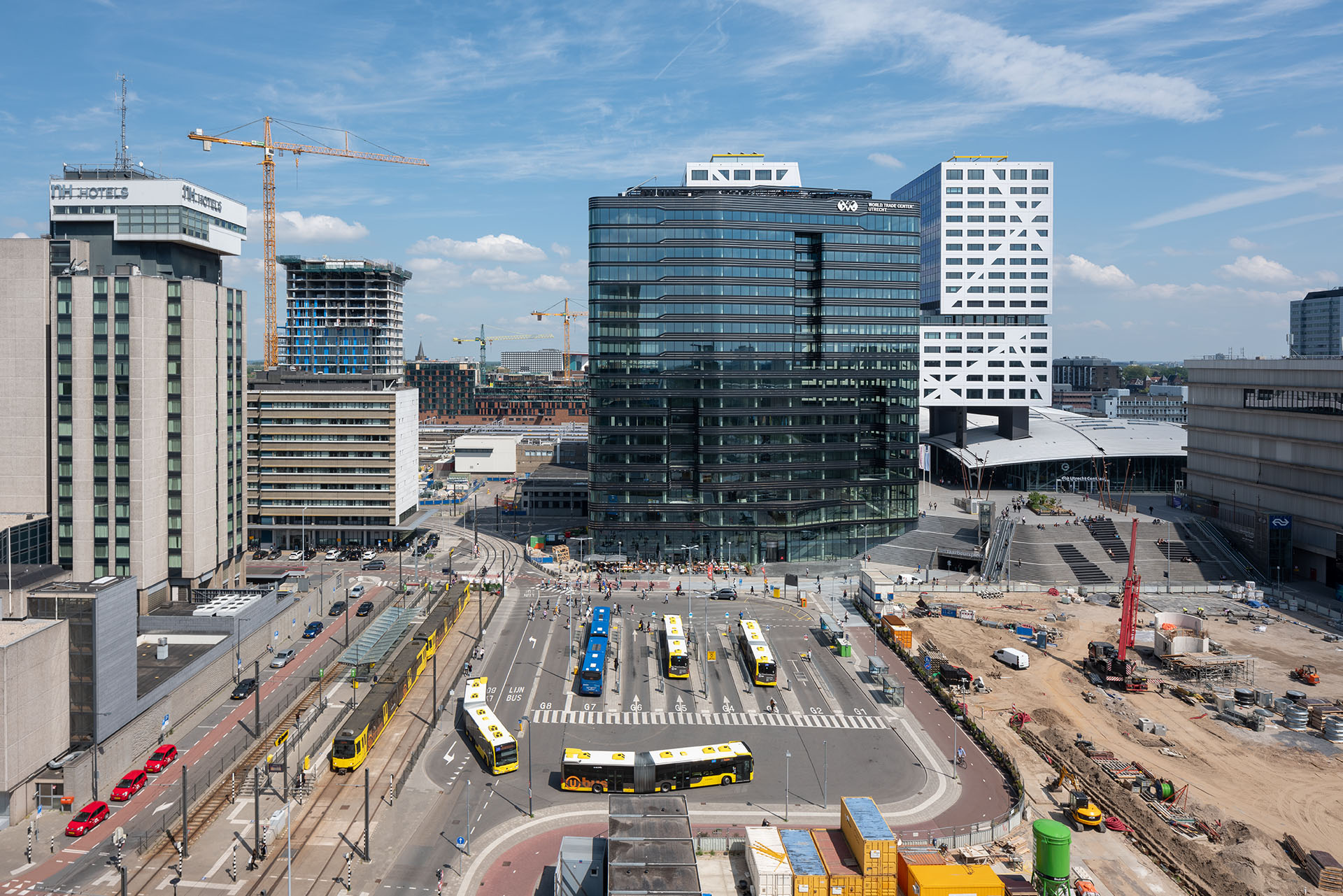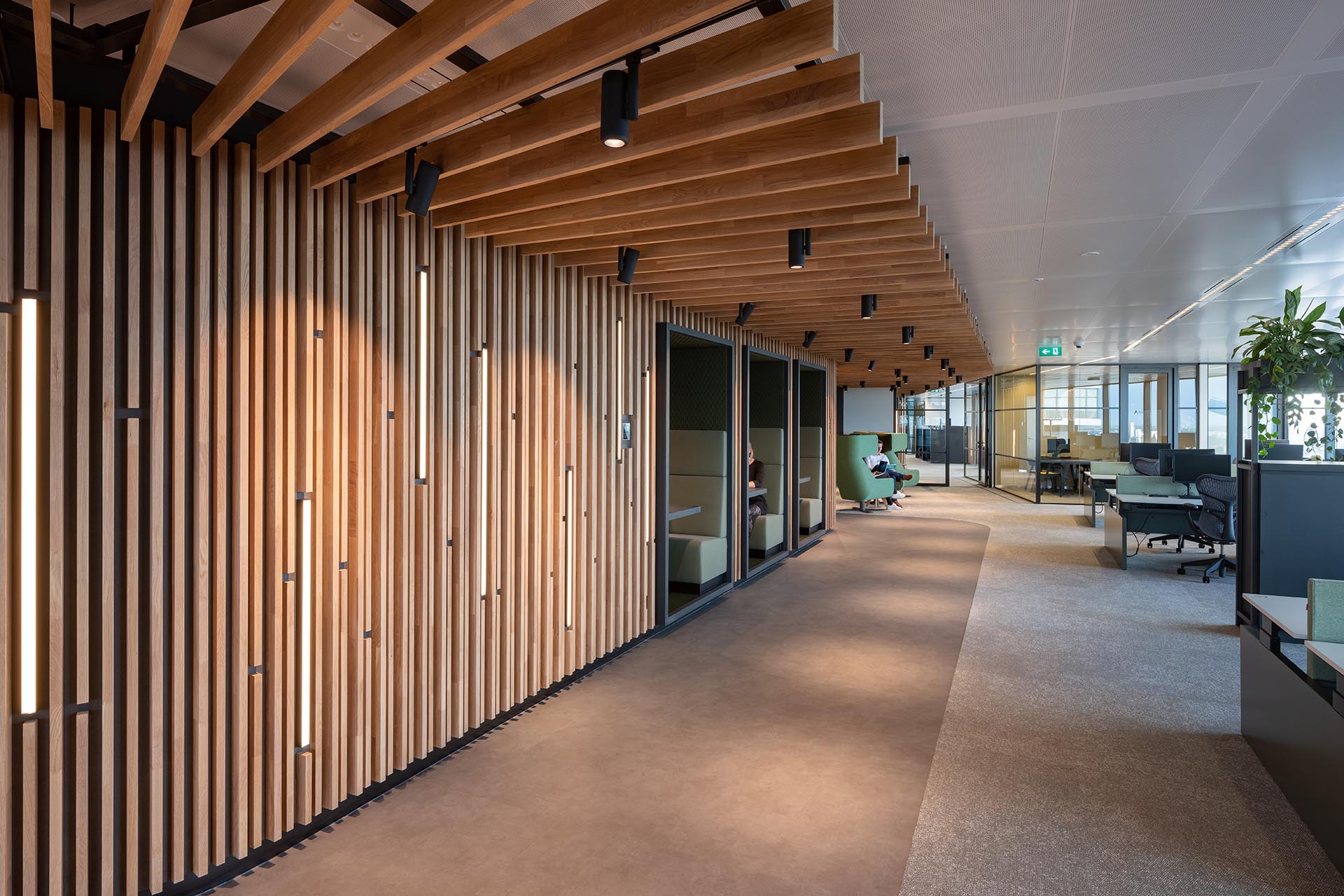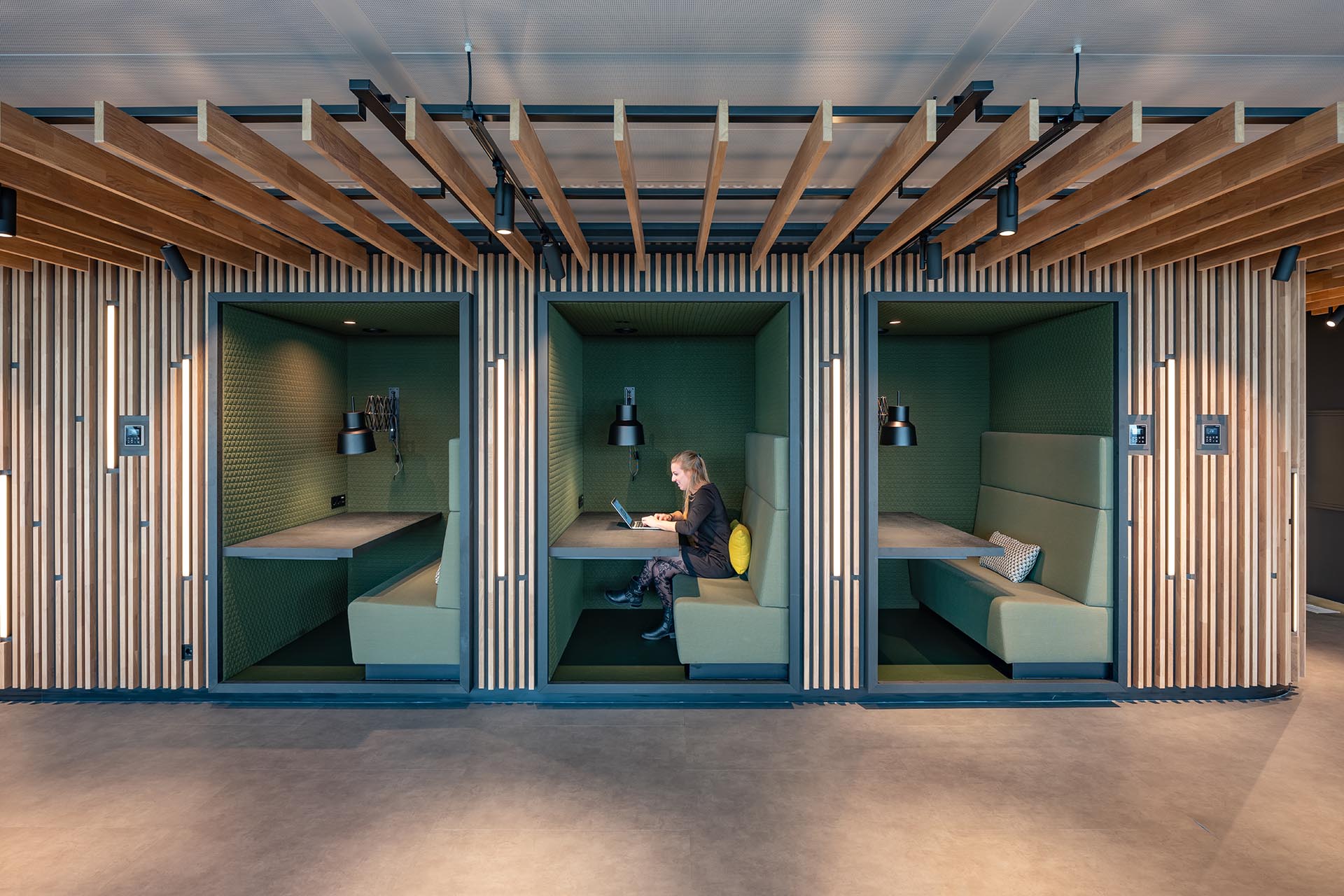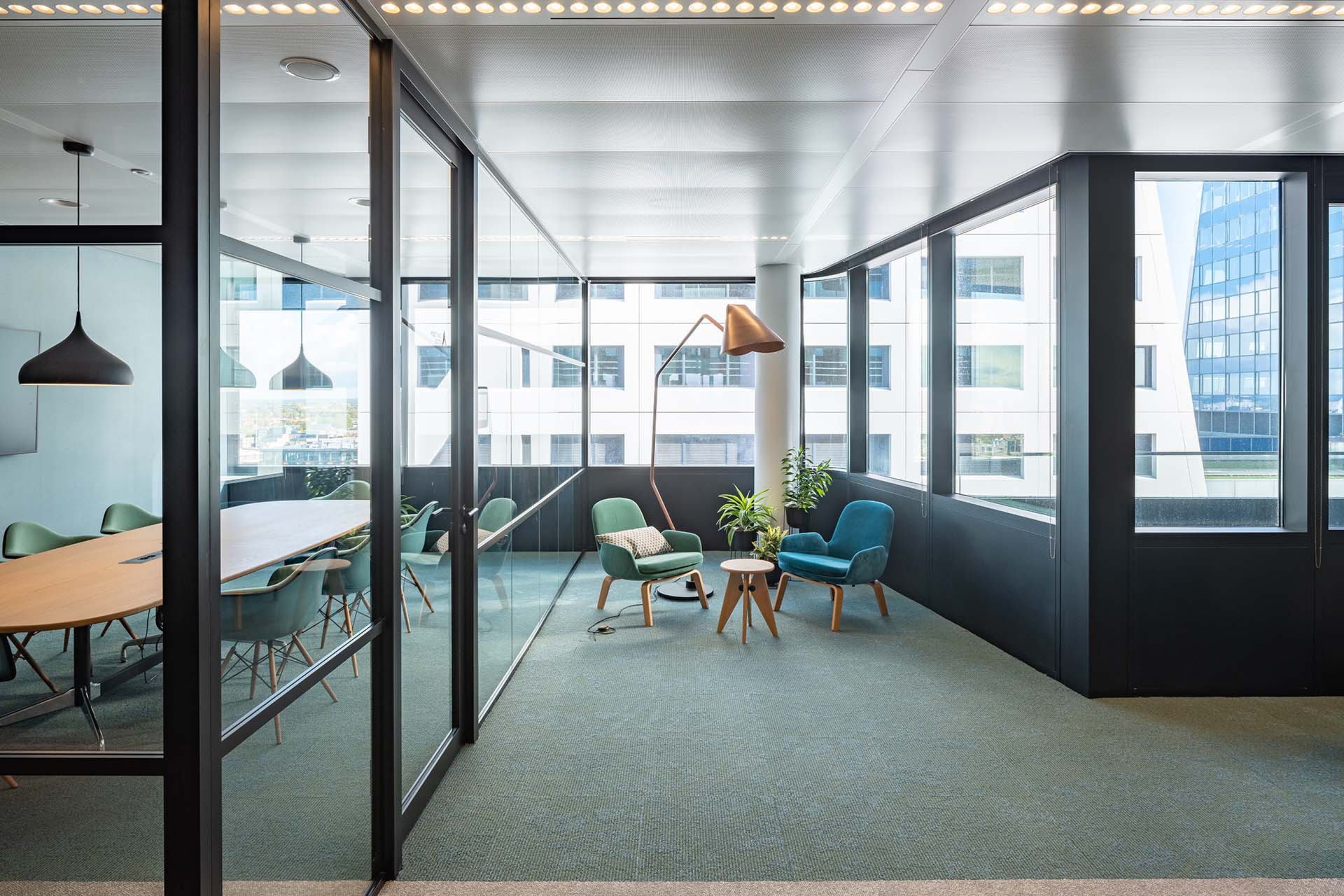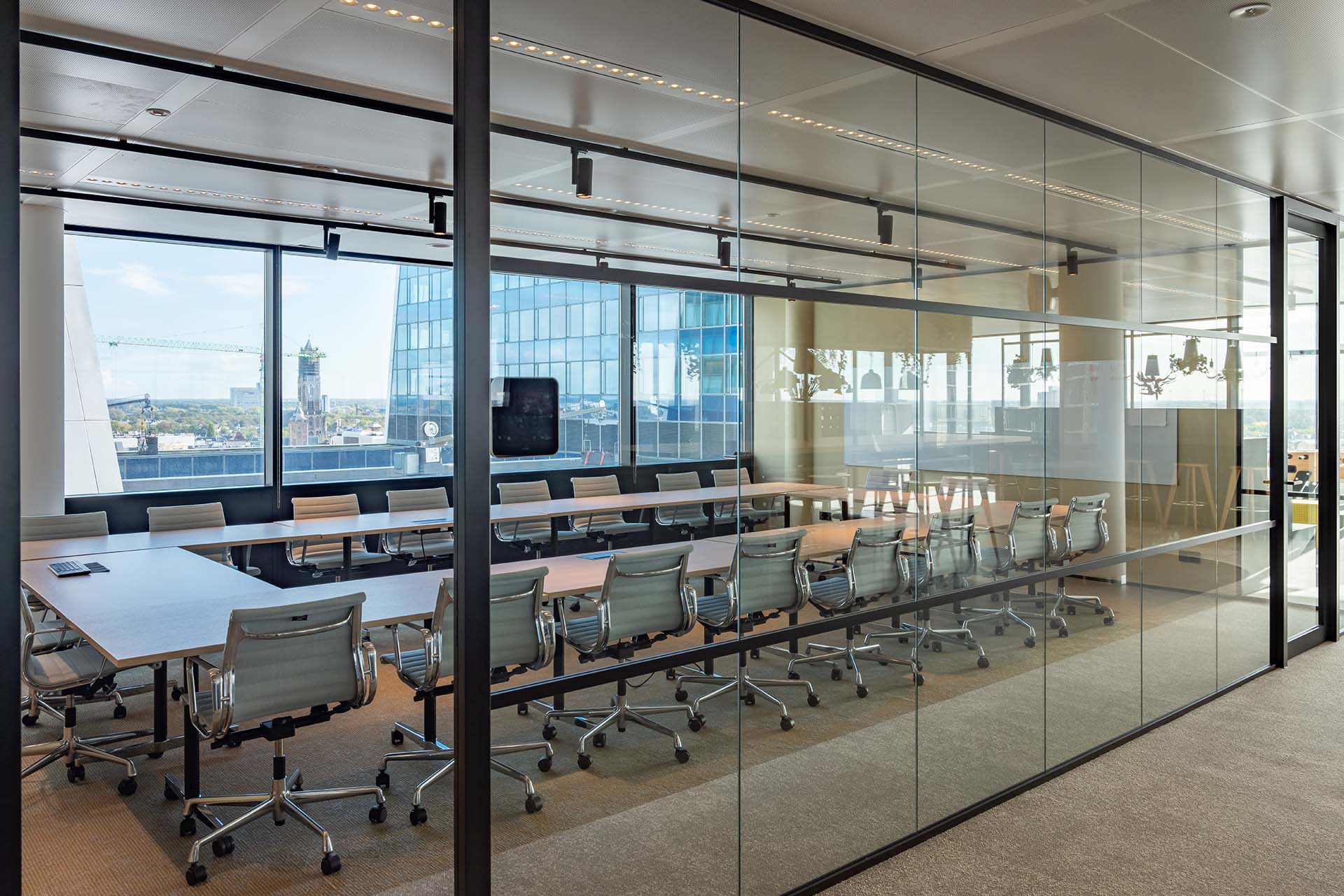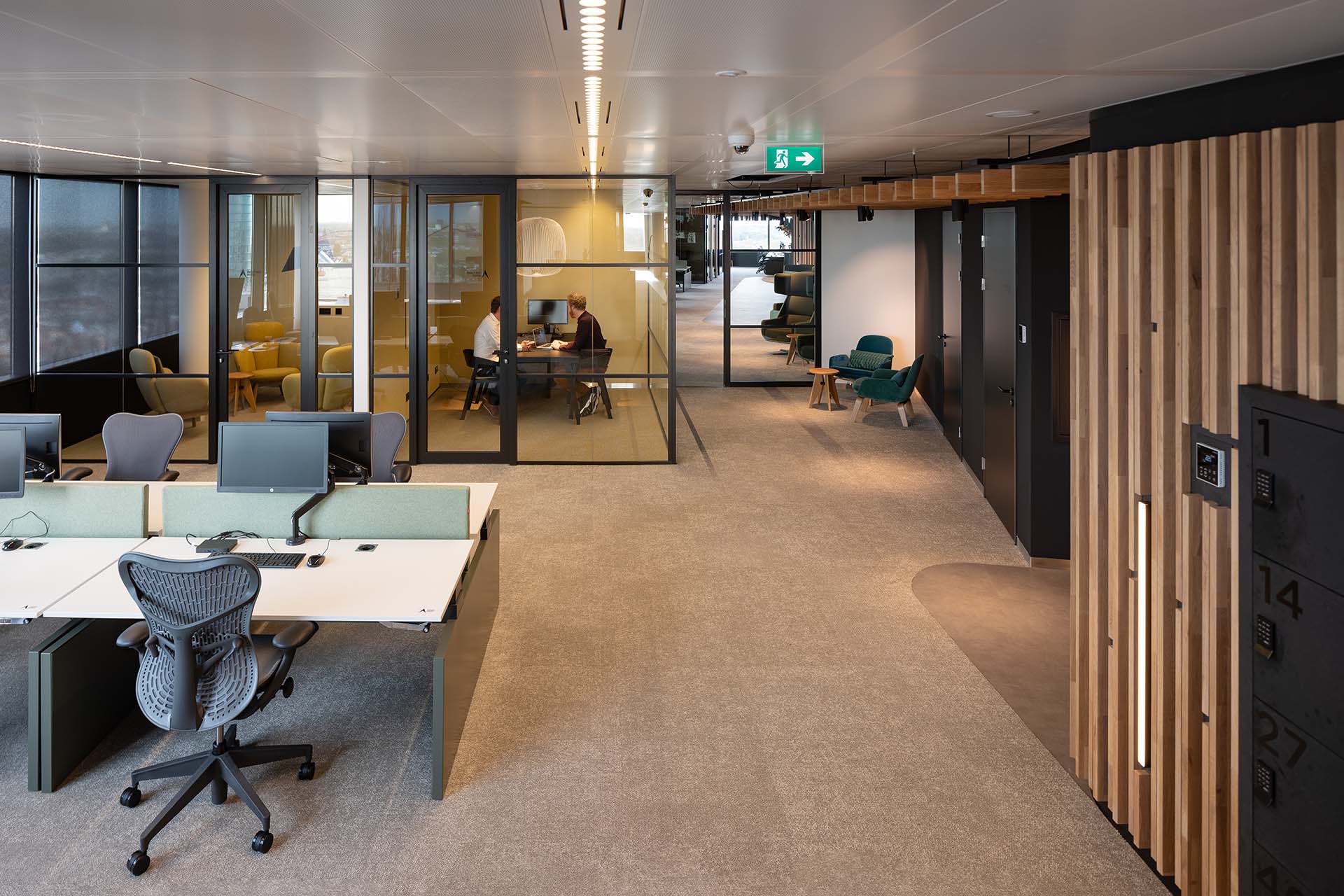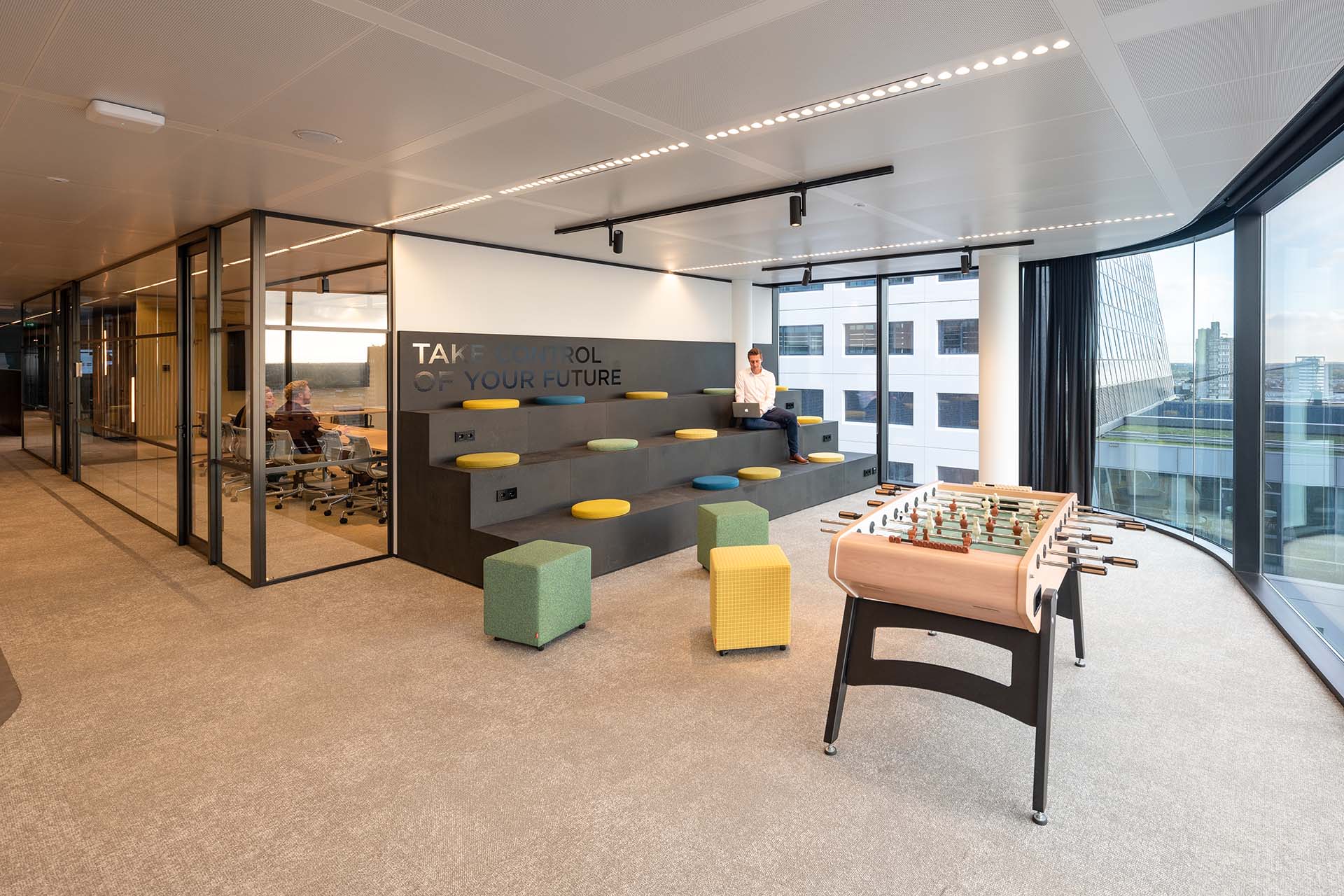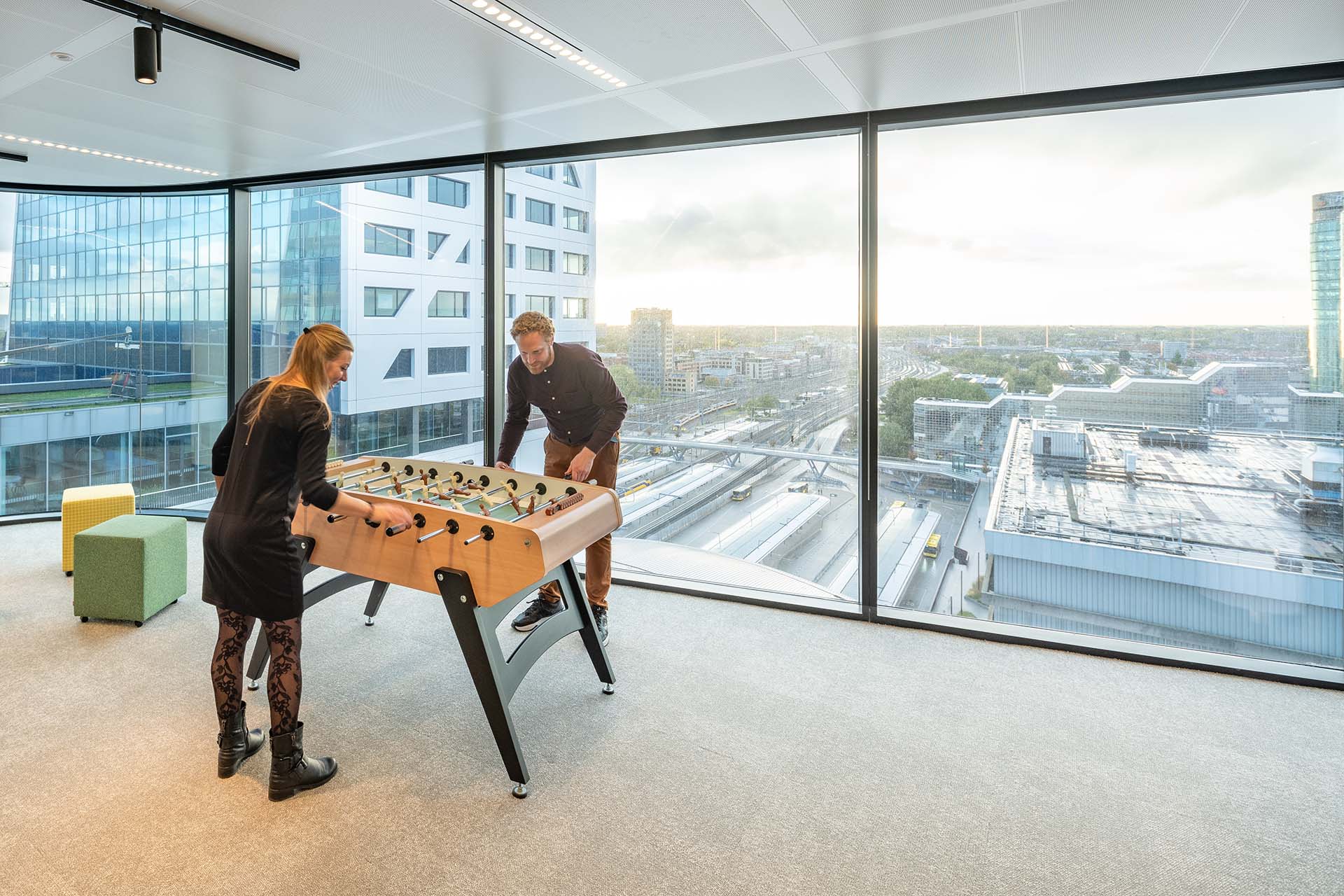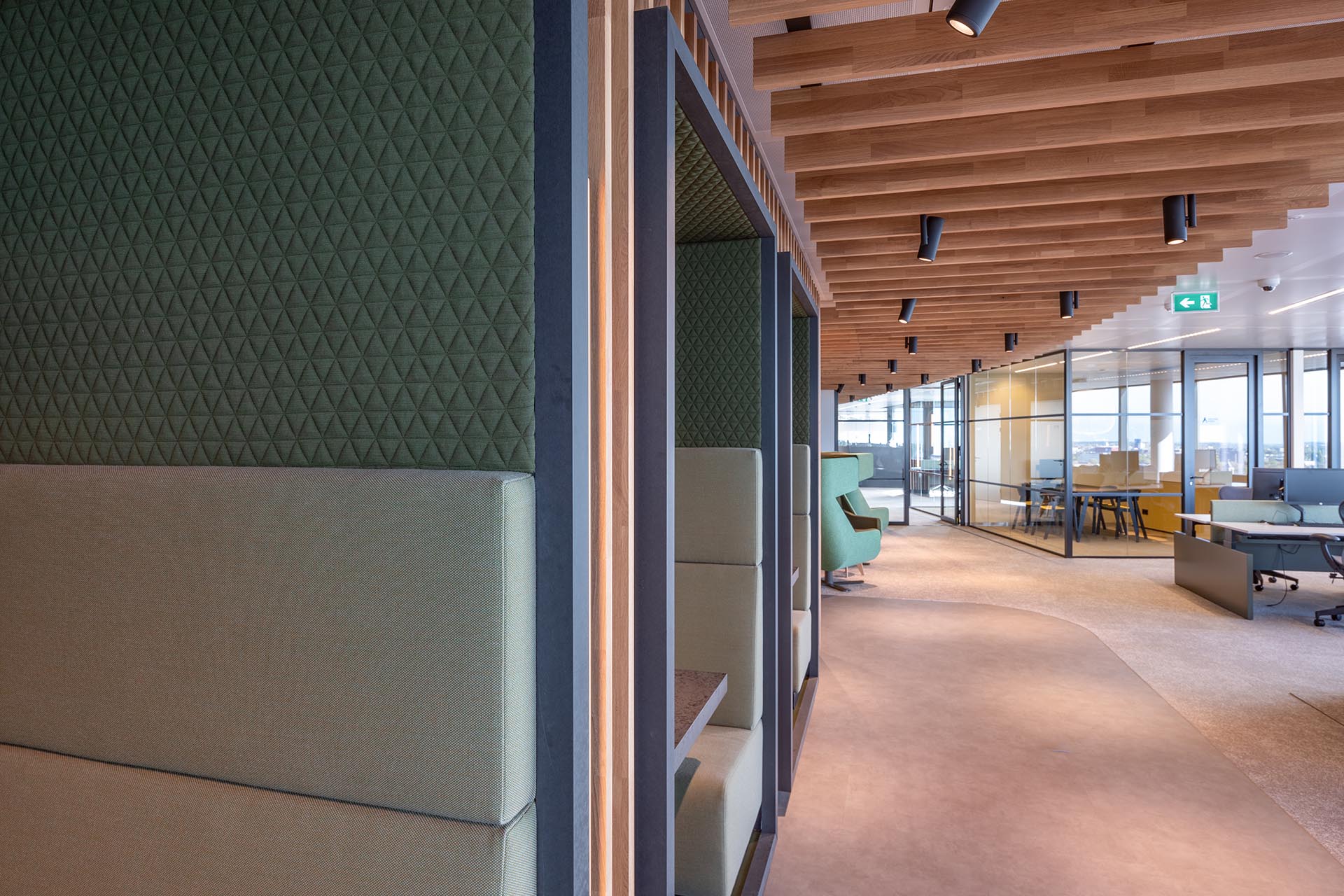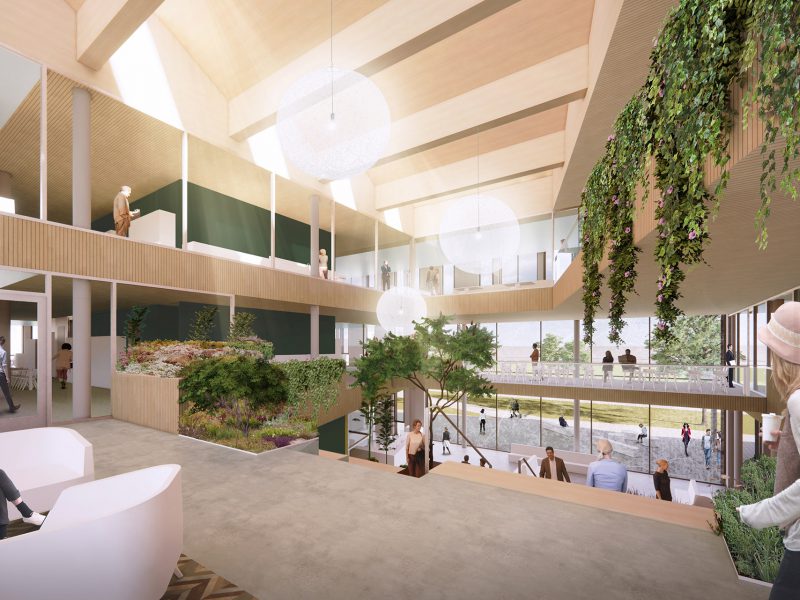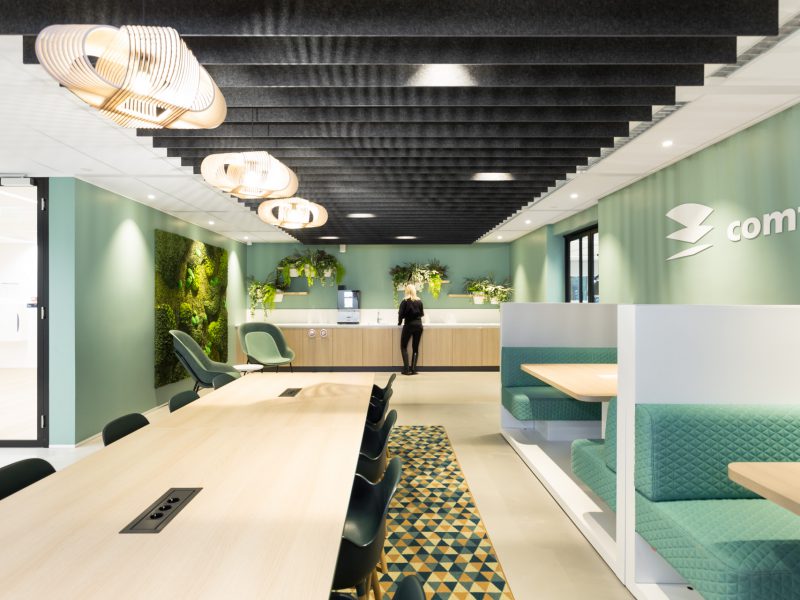NAVIGANT UTRECHT
In late 2016, US firm Navigant acquired the Dutch company Ecofys in order to jointly benefit from the global energy transformation. Navigant is a business service provider specialising in consultancy in the field of energy and sustainability. The takeover gives Navigant a foothold in continental Europe. This prompted the decision to opt for a central location in the brand-new, sustainably-constructed (WELL and BREEAM Excellent certified) World Trade Centre, alongside Utrecht Central Station. In this architectural eye-catcher, Navigant has set up business on the 15th floor, with a magnificent panoramic view across Utrecht and the surrounding area. ZENBER Architecten was approached to create a working environment that blends with the architecture and reflects the organisation’s mentality and vision of sustainability.
